DOCtalk by Dr. Gregg 1/27/12
Have Fun, Make Money, Change the World
Last year at about this same time, I was introduced to Health Care DataWorks (HCD). Located in Columbus, OH, they were a start-up with about 11 employees working in an almost archetypically Spartan start-up office space with programmers all sitting around one large conference table, pounding away on laptops, coding and debugging and trying to build a future.
They invited me back last week to see their new digs – and probably to show off just a bit as they had been having a pretty good go of it since last we met. I had truly enjoyed our first meeting so, as they are geographically near, it wasn’t that hard to decide to drive over.
Economic downturn be damned. HCD apparently hadn’t gotten the news of the economy’s slowdown. They had expanded to some 40 employees. They had moved into a gorgeous new space with real offices, real furniture, lots of lovely lake view windows, plus a company ping pong table. They were even getting ready to knock down some walls to expand yet again.
Of course, that’s all bows and ribbons and wrapping paper. The package inside is what I was interested in.
I’m very happy to say that the folks there had not let the transition from start-up to emerging growth company and their successes against some giants like IBM and Oracle go to their heads. They remained focused, clear, and personable.
Providing “business intelligence solutions that enable healthcare organizations to improve quality and reduce costs”, HCD delivers enterprise data warehouse and research solutions along with hospital and health system analytic dashboards to help improve quality and control costs. Sort of the “Intel inside” for hospitals. Their tools are pretty slick and very comprehensive. As they were recently featured on HIStalk’s Innovator Showcase, you can read more about “the what” there.
Here, I’d like to give just a little more of “the who,” because, if you’re like me, you also want to know about the people behind the scenes of cool tool creation and which way their personal bents bend.
Herb Smaltz is in his first role as a CEO, having lived his prior life in CIO shoes. He is well trained to see the problems he’s trying to help solve. He’s also enjoyable and enthusiastic with an almost child-like awe and joie de vivre. One very enjoyable trait: while he fills his role as the company’s head cheerleader well, he is not so mired in his own world as to miss the view of what might expand it from beyond.
COO Jason Buskirk is their business intelligence (BI) engineer. He’s just as pleasant as Herb, but quiet. He listens intently and seems to gobble up information, speaking rarely. But when he does, it’s with keen and concise insight.
Co-chair and CFO Jeff Wilkins provides a sense of comfortable confidence to the team. His self-assured nature completely avoids any sense of pomposity despite his long track record of corporate success. (Among other things, he founded CompuServe back in the ‘60s and helped open the World Wide Web to us all.) He easily mixes great stories about wild swans and “Henry and Dick” Block with insights into corporate culture and strategies.
They seem to swim in a pool of “I get it.” Not only can they expound upon the values and challenges and solutions within their current laser focus market of BI for large to mid-size hospital systems, but they easily perceive potentials that may be tangential to their foci. I have found this rare. To me, C-suiters seem to more often have an air of “we know best” rather than having a willingness to listen or examine other perspectives (especially when speaking with any lowly non-C-suiters.)
Maybe they’ll gain some proper C-suite arrogance once they move beyond emergence into maturity. But for now, they are the type of people you want to see behind any technology, product, or service you’re considering. (Shhhh… Yes, that’s right. Don’t say anything, and nothing’s firm, but they did hint at some potential tools that would more directly serve the trench grunt world.) Maybe when HCD grows up, they’ll abandon their Pollyanna-esque corporate approach, but I hope not. Personally, it’s one of my favorites, summed up by their Jobs-ian company credo, “Have fun, make money, change the world.”
Makes a geeky American capitalist smile.
From the trenches…
“I would trade all of my technology for an afternoon with Socrates.” – Steve Jobs

Dr. Gregg Alexander, a grunt in the trenches pediatrician at Madison Pediatrics, is Chief Medical Officer for Health Nuts Media, directs the Pediatric Office of the Future exhibit for the American Academy of Pediatrics, and sits on the board of directors of the Ohio Health Information Partnership (OHIP).


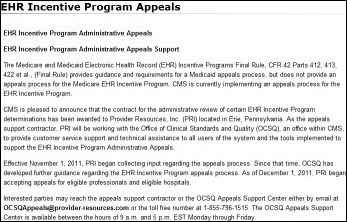
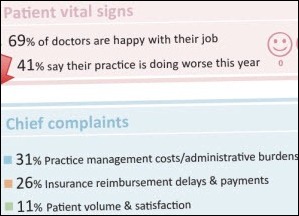



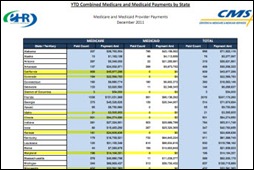

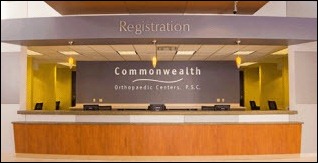


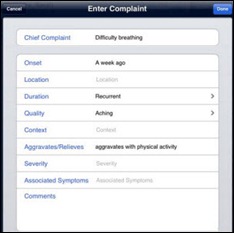

The article about Pediatric Associates in CA has a nugget with a potentially outsized impact: the implication that VFC vaccines…